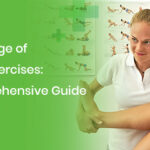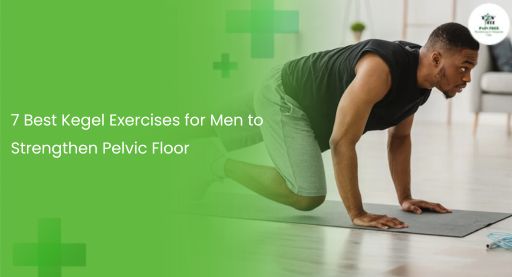Unlocking the Power of Isometric Exercise: Benefits, Examples, and FAQs
In the world of fitness, there are various exercise techniques that help improve strength, endurance, and overall physical well-being. One such technique gaining popularity is an isometric exercise.
Today, we’ll explore the benefits of isometric exercises, provide examples of the top 7 isometric exercises, and answer frequently asked questions about this unique form of strength training.
Understanding Isometric Exercises
Isometric exercises are a type of strength training in which the muscles contract but do not change in length. Unlike traditional exercises that involve movement, these exercises involve holding a specific position for a set period. These exercises are often used to target specific muscle groups and improve strength and stability.
The Rising Popularity of Isometric Training
Isometric exercises have gained popularity in recent years due to their effectiveness, versatility, and time efficiency. Whether you’re an athlete looking to enhance performance or someone seeking a low-impact workout, these exercises offer a range of benefits.
Benefits of Isometric Exercise
Improved Muscle Strength
- Targeted Muscle Activation: These exercises allow you to focus on specific muscle groups, leading to improved strength in those areas.
- Plateau Breaker: They can help break through strength plateaus when traditional exercises no longer yield results.
Enhanced Joint Stability
- Joint Support: These exercises promote joint stability, making them suitable for individuals with joint issues or those recovering from injuries.
- Injury Prevention: Strong, stable joints are less prone to injury during physical activities.
Time-Efficient Workouts
- Short Workouts: These exercises can be completed in a relatively short amount of time, making them ideal for busy individuals.
- Minimal Equipment: Many isometric exercises require little to no equipment, allowing for convenient workouts anywhere.
Lower Risk of Injury
- Reduced Impact: Isometric exercises are low-impact, minimizing the risk of strain or injury.
- Controlled Movements: The static nature of these exercises which is a physiotherapy exercise promotes controlled and safe movements.
Top 7 Isometric Exercises
- Isometric Neck Exercises
Neck Resistance: Place your hand on your forehead and gently push your head forward while resisting with your neck muscles. Hold for 10 seconds, then repeat in different directions.
Isometric Leg Exercise for Overcoming Heavy Legs
Wall Sit: Stand with your back against a wall and slide down until your thighs are parallel to the ground. Hold for 30 seconds to 1 minute.
Quads Isometrics
Sit or lie down with your legs extended. Tighten the muscles on the front of your thigh, lifting your heel slightly off the ground. Hold the contraction for 5-10 seconds, then release. Repeat this process for multiple sets. Quads isometrics are excellent for strengthening the quadriceps, and promoting knee stability.
Wall Sits
Quad Strength: Similar to the isometric leg exercise, wall sits target the quadriceps. Hold for 30 seconds to 1 minute.
Isometric Push-Ups
Push-Up Hold: Lower yourself into a push-up position and hold at the halfway point for 30 seconds to 1 minute.
Glute Bridge Holds
Glute Activation: Lie on your back with your knees bent and lift your hips off the ground, forming a straight line from shoulders to knees. Hold for 30 seconds to 1 minute.
Hamstring Isometrics
While seated, press the back of your knee into a surface (such as a chair or bench) while contracting the muscles at the back of your thigh. Hold the contraction for 5-10 seconds before releasing. Repeat for several sets. Hamstring isometrics are beneficial for balancing muscle strength around the knee joint.
Adductor Isometrics
Sit with your knees together and place a softball or cushion between them. Squeeze the ball using your inner thigh muscles, holding the contraction for 5-10 seconds. Release and repeat. Adductor isometrics contribute to inner thigh strength, aiding in overall knee stability.
Don’t miss our latest video on isometric exercises in correct posture, watch our video below
How Long Should You Hold Isometric Exercises?
Tailoring Duration to Your Fitness Level
- Beginners: Start with 15-30-second holds and gradually increase the duration as you build strength.
- Intermediate: Aim for 30-60 second holds to challenge your muscles effectively.
- Advanced: Hold for 60 seconds or more to maximize muscle endurance and strength.
Progression and Challenge
- Vary Positions: Experiment with different positions and angles to target specific muscles.
- Combine Exercises: Create routines that include multiple isometric exercises to work different muscle groups.
Isometric Stretching: A Different Approach
Isometric stretching involves contracting a muscle while simultaneously stretching it. This technique can improve flexibility and range of motion. Incorporating isometric stretching into your routine can complement your traditional exercises.
FAQs (Frequently Asked Questions)
Are Isometric Exercises Suitable for Beginners?
Yes, these exercises can be adapted to various fitness levels, making them suitable for beginners. Start with shorter holds and gradually increase intensity as you build strength and confidence.
Is It Safe to Do Isometric Exercises with Pre-existing Injuries and in Acute Low Back Pain?
These exercises are generally safe for individuals with pre-existing injuries, but it’s essential to consult with a healthcare professional or physiotherapist to ensure you choose exercises that won’t exacerbate your condition.
Can Isometric Exercises Replace Traditional Strength Training?
These exercises are a valuable addition to a well-rounded fitness routine but may not entirely replace traditional strength training. They can complement other forms of exercise for a balanced approach to fitness.
How Often Should I Include Isometric Exercises in My Routine?
The frequency of these exercises depends on your fitness goals. Aim for 2-3 sessions per week, with each session including a variety of isometric exercises targeting different muscle groups.
Pain-Free Physiotherapy & Chiropractic Clinic: Your Isometric Experts
Our Physiotherapists
At Pain-Free Physiotherapy & Chiropractic Clinic, we have a team of experienced physiotherapists who specialize in isometric exercises. Our experts can assess your fitness level, create tailored isometric exercise routines, and provide guidance to help you achieve your fitness goals.
Dr. Roshan Jha: The Specialist in Isometric Training











